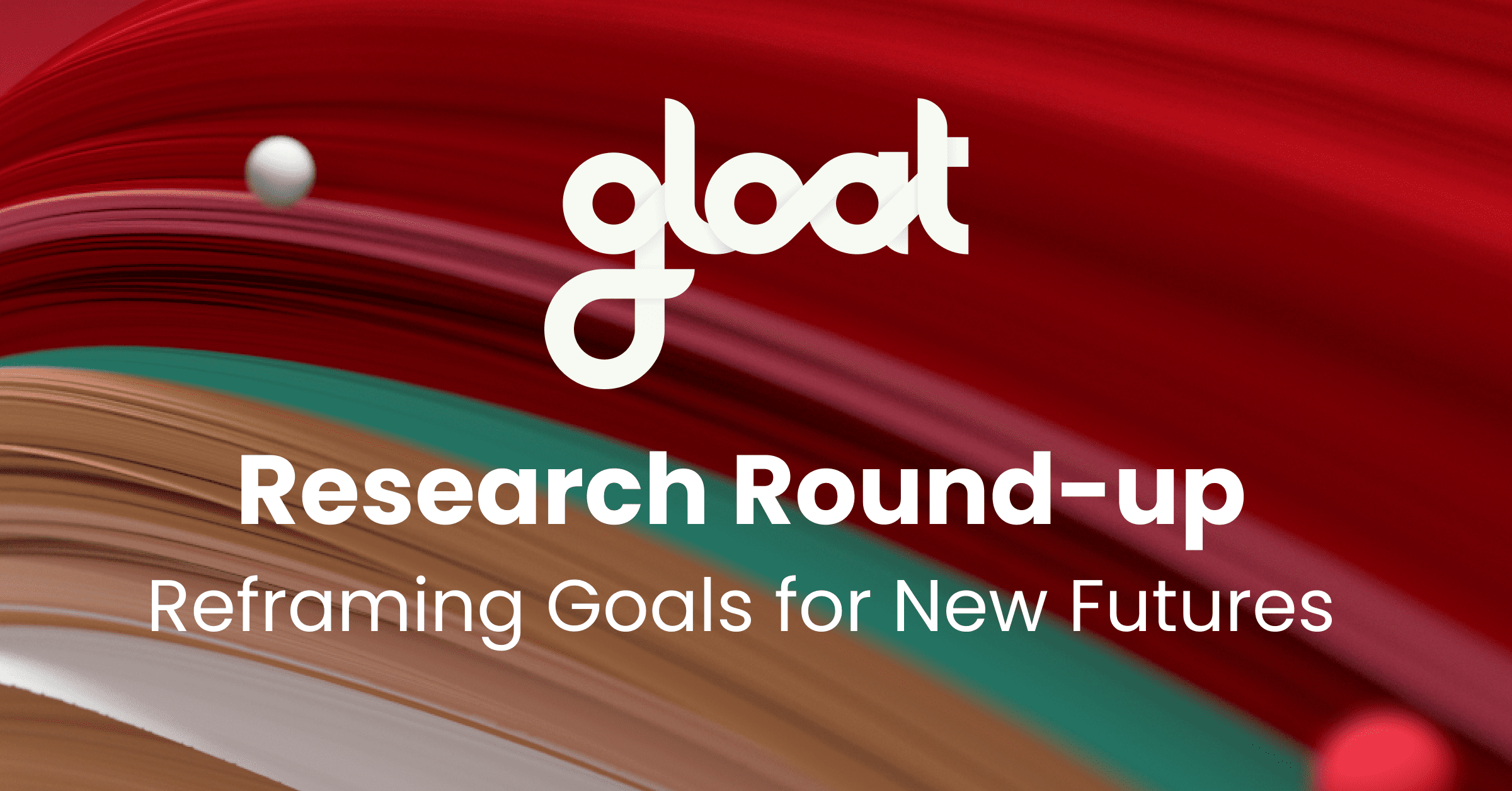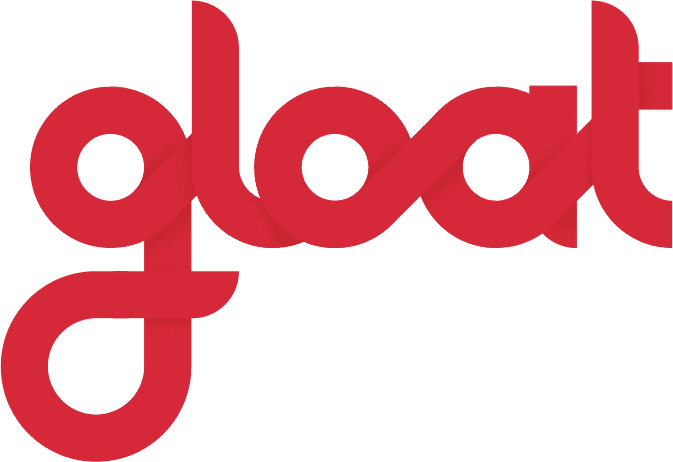January research round-up
Setting priorities for 2022 – reframing goals for new futures Gloat research round-up: what I’m reading, listening to, and thinking about in the world of talent marketplaces

Reimagination and reframing will be two of 2022’s biggest themes. They require a seismic shift in mindsets and mental models. Yet, shifting to a different mindset and pursuing new horizons is what will differentiate tomorrow’s leading businesses from those that are stuck in the past.
Reimagination is particularly challenging right now because we’re still working our way through the challenges of COVID-19, the pressures on our wellbeing and families, and the dramatic shifts in how and where many of us have been working. There are also so many voices telling leaders what their priorities should be, the specific tools they need to rely on, and the frameworks they must follow. So how do we begin to separate the signal from the noise?
Start by glimpsing into the future and asking yourself what you want to achieve by this time next year. When you read the headlines in 2023, what do you want them to say about your business? What will your proudest moments be? Let these future milestones determine the goals you set and the changes you need to make right now. Think ahead, just a few years, to 2025: What accomplishments do you want to reflect on three years from now? What future do you want to create?
There are, of course, many valuable insights and perspectives that can serve as guidance, which is why I am dedicating this month’s research roundup to spotlighting a sampling of the content that I hope will help leaders strategize for 2022. While this is obviously not a comprehensive list, it does provide a range of perspectives that help to capture the challenges and opportunities of 2022: a year to move beyond adaptation to a year of reimagination.
Here are some of the lessons, breakthroughs, and discoveries to keep in mind as you set your priorities for the year to come.
READ: What’s new in thought leadership about the future of work
Don’t Kid Yourself. The Great Resignation Is Not Over, Inc., by Phillip Kane
Some optimists may have hoped that turnover surges would end as 2021 came to a close. Unfortunately, that’s not going to be the case, as Kane explained in Inc. last month. Instead, resignations will continue to climb until organizations begin taking action and making necessary changes. Kane reminds us that the winners of the Great Resignation are going to be the employers who show they care about their workforce by empowering their people to contribute to something greater than themselves.
The Great Attrition: Facing the labor shortage conundrum, McKinsey, by Aaron de Smet, Bonnie Dowling, Marino Mugayar-Baldocchi, and Joachim Talloen
We can’t set future priorities without understanding the events that got us to where we are today. This McKinsey blog post puts the Great Resignation in context, explaining how it differs from previous workforce shifts in both magnitude and nature. It also foreshadows some of the lasting repercussions that we’ll need to grapple with if today’s labor shortage continues, including supply chain issues, inflation, and a potential recession.
The Future of Work is a 60-Year Career, The Atlantic, by Joe Pinsker
The pandemic may have accelerated and amplified calls for change, but ultimately, reimaging work was inevitably going to become a global priority and this Atlantic article explains why. As life expectancies get longer and people start spending more time on the job, the nature of work itself needs to change. Pinsker explores why a more flexible, less demanding vision for work in the future may become the solution that leaders are looking for.
Economists are revising their views on robots and jobs, The Economist
One of the central future of work questions for the past several years has been the debate about the robot apocalypse and the coming wave of technological-driven unemployment by automation. And yet, while automation has accelerated during the past couple of years, so has the demand for people and talent. The debate on human-machine collaboration continues to shift between substitution and augmentation. An emerging thesis, which I find compelling, is that technology is changing the nature of work but not necessarily reducing the demand for human workers. This is a critical question for the coming decade and now is the time to begin preparing a point of view and response.
LISTEN: What I’ve been playing on repeat
The Way We Work is Broken, The So What From BCG, by Deborah Lovich and Brian Elliott
This podcast is required listening for leaders who are looking to prepare for the changes ahead and finetune their strategies for 2022. During the episode, Deborah Lovich, who leads BCG’s people strategy topic, and Brian Elliott, Executive Leader and Senior Vice President of Future Forum, discuss how organizations can start to recalibrate their outdated approach to leadership, work, culture, and purpose.
THINK: What research and studies are saying about our path forward
Why it’s So Hard to Keep and Recruit Employees Right Now, MIT Sloan Management Review, by Lynda Gratton
Rather than just reflecting on the factors that may have caused the Great Resignation, Lynda Gratton’s column focuses on the changes leaders need to make to prevent it from happening in the future. One of my favorite recommendations is her suggestion for greater experimentation. She notes that many companies are designing revolutionary talent practices and that these new options and evolving strategies will push the envelope and potentially set the new standard for workplace experience in their industries.
2022 Edelman Trust Barometer: The Cycle of Distrust, Edelman
People want to see that their organizations are stepping up and making a difference, not just within the confines of their workplace, but also for society at large. Edelman’s latest Trust Barometer indicates that respondents believe businesses are not doing enough to address societal problems, including climate change (52%), economic inequality (49%), and trustworthy information (42%). Edelman has been reporting on the state of trust in the world for 20 years. Given that “trust” is one of the themes of the past couple of years and the next few as well, as we adopt new models of work, reviewing this year’s and previous years’ reports is valuable to shaping priorities in 2022 and beyond.
Toxic Culture is Driving the Great Resignation, MIT Sloan Management, by Donald Sull, Charles Sull, and Ben Zweig
The Great Resignation is uncharted territory for all of us. While we might not have a map that details every step we need to take to carve our way out of it, we’ve got ground-breaking research that sheds light on emerging best practices, like this report from MIT Sloan. Researchers identified four key actions that can help reduce attrition, with lateral career opportunities ranking as the most powerful short-term step that companies can take to improve turnover rates.
ICYMI: What I keep coming back to
Beyond the Job, Deloitte Insights, by Susan Cantrell
As business and talent leaders explore game-changing moves for 2022, this article from Susan Cantrell is a must-read. Now that we’ve recognized that the Great Resignation is more than a trend, but a fundamental shift in employee expectations, broadening our view of work and the workforce needs to be front and center. Susan frames the changing nature of jobs and work and points us in two directions:
- Work is becoming taskified and this fuels automation and gig work
- Work is broadening, beyond traditional jobs, to require expanded skills and capabilities. From both directions, jobs may become a less useful measure for designing work and engaging the workforce.
CONNECT: What future-fit organizations and leaders are talking about
Larry Fink’s 2022 Letter to CEOs: The Power of Capitalism, BlackRock, by Larry Fink
In his annual letter to shareholders, BlackRock CEO Larry Fink continues to capture the profound shifts we’re seeing. “No relationship has been changed more by the pandemic than the one between employees and employers,” he writes. Rather than framing these developments as some sort of detour on the road to returning to normal, Fink reminds his readers that the old world of work is gone. “CEOs face a profoundly different paradigm than we are used to,” he explains, noting that leaders must create better, more innovative environments for their employees and that these actions will in turn help them achieve greater profits for their shareholders. Fink’s letter to CEOs, this year and in years past is essential to deepening our understanding of forces shaping the future.
2022 is a year of choice and consequence. It’s a year when we need to adapt, re-imagine, and energize ourselves and our teams and organizations to pivot beyond responding to dramatic challenges to planning and creating the preferred futures of the 2020s: starting with writing the headlines for January 2023.





